Go to All Blogs | African Birding Blogs | Birding Blogs | Endemic Birds Blogs | South African Lark Tour
| South African Birding Tours | All our birding tours
Posted 04 October 2016.
Larks, larks, larks … and more wonderful larks! The arid Northern Cape of South Africa is very well known for many wonderful species of larks, including seven species considered endemic or near-endemic to South Africa. Larks are not generally considered the most flashy or charismatic species, but I for one thoroughly enjoy LBJs, and larks are right up there among my favorite birds.
The first area that we spent some time birding was Aggeneys and Pofadder. The endemic Red Lark was our first target here, and on our first morning we located a couple of birds singing and displaying in the Koa Valley, just to the southeast of Aggeneys. The large and bulky Red Lark delivers a deep-rattling song in flight or from a perch on a dune crest or a fence post. Take note of the horizontal posture of the bird.
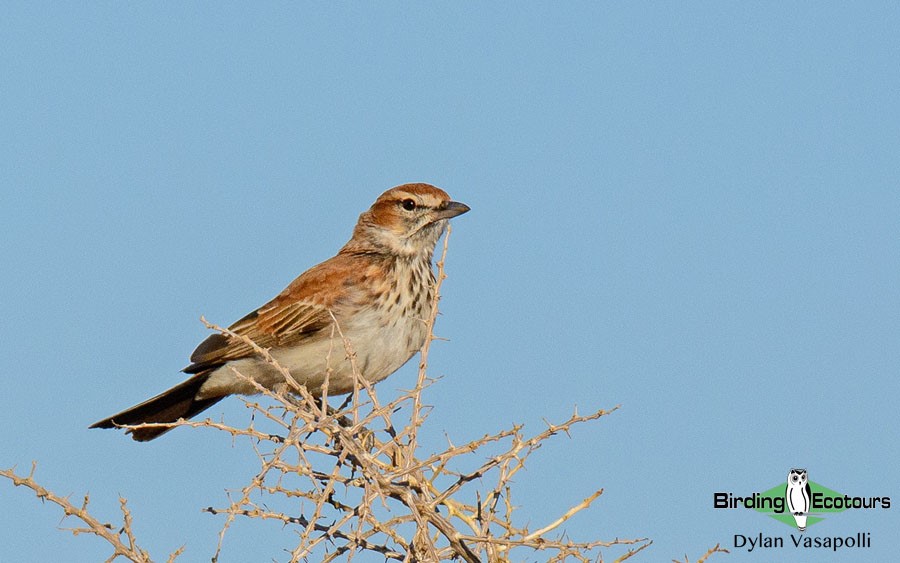
We also encountered the likes of Bradfield’s Swift, Short-toed Rock Thrush, Pale-winged Starling, Tractrac and Sickle-winged Chats, and the incredible and stunning little Cinnamon-breasted Warbler. These warblers have an incredibly distinctive call that can echo down from the rocky slopes that form its primary habitat. We found the territory of a male bird and sat quietly alongside some large rocks – this species hops about on the rocks, often clambering between the rocks and small bushes as opposed to flying.
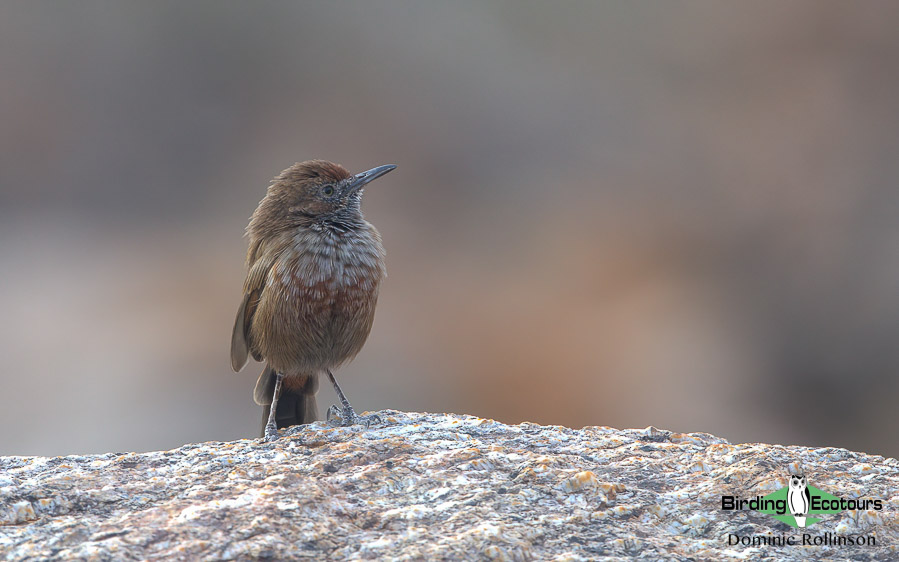
A night drive was most certainly on the cards, as the area is well known for some excellent nocturnal mammals as well as Cape Eagle-Owl. We were unlucky with the owl but did manage to see Aardwolf and Aardvark as well as Striped Polecat. By the end of the two days spent around Aggeneys and Pofadder, our lark tally had also grown substantially – we enjoyed seeing the likes of Karoo Long-billed, Cape Clapper, and Fawn-colored Larks, the bradfieldi subspecies of Sabota Lark, and Red-capped Lark.
We moved on through Springbok to Port Nolloth via the Spektakel pass and Kleinsee. The scenery was stunning, and the birds were brilliant! We encountered our first of many Ludwig’s Bustards as well as the likes of Fairy Flycatcher and Grey-backed Sparrow-Lark. The Grey-backed Sparrow-Lark in this region belongs to the subspecies damarensis.
The coastline from Hondeklip Bay right up to Alexander Bay, some 200 kilometers, is historically famous for producing large amounts of diamonds among other precious stones. Birder’s definitely won’t say no to stumbling across a diamond or two, but are rather on the lookout for the somewhat coastal lark species such as Barlow’s and Cape Long-billed Larks. The small town of Port Nolloth is a good base from which to explore the area. A trip to slightly north of Holgatrivier yielded some awesome sightings of a pair of Barlow’s Lark calling from some low coastal dune vegetation. Barlow’s Lark is a fairly recent split from Karoo Lark, and birds seem to be hybridizing between Port Nolloth and Alexander Bay.
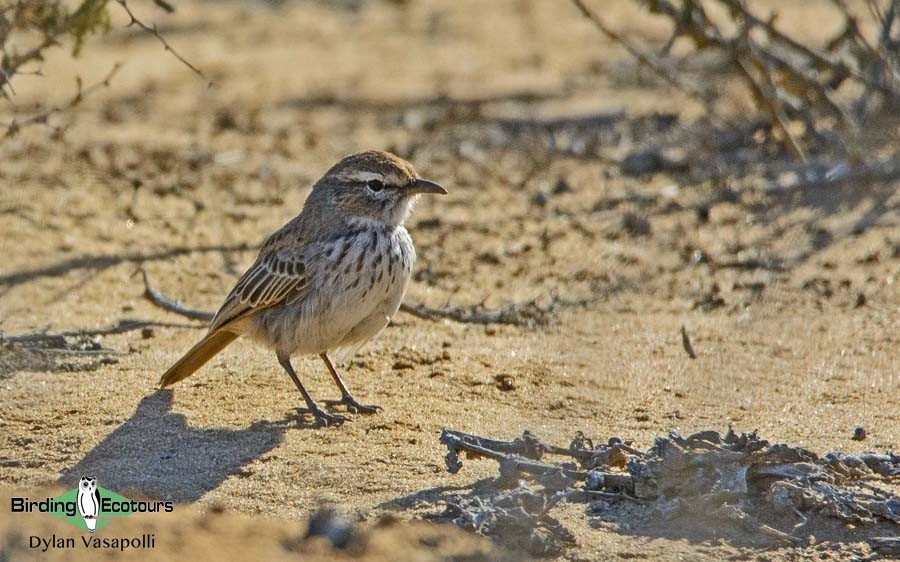
The incredible Cape Long-billed Lark was out in good numbers, and at every stop we managed to hear them calling – a beautiful, drawn out, double, descending whistle. Unfortunately they seem to be rather shy and did not allow for any photographs. Humph! We also connected with the most westerly species of the eremomela family, the Karoo Eremomela. These birds hang around in little family groups and also have a distinctive but monotonous call that can be heard from quite a long way away for such a small bird.
Namaqualand was the next area on our agenda, and our drive through to Kamieskroon would allow us to pass through some of the flower-rich landscapes that give this area so much beauty! The beautiful Malachite Sunbird was in full plumage and as stunning as ever. Grey Tit and Layard’s Warbler occupied the vegetated rocky slopes, and both their calls could be heard from the area in which we were camping. The subspecies leucolaemus of Black-headed Canary (“Damara Canary”) was also a treat to see; we had a few flocks of these cruising overhead while giving their sweet little contact call. Some flocks landed nearby and allowed us to have really nice looks and take a few pictures.
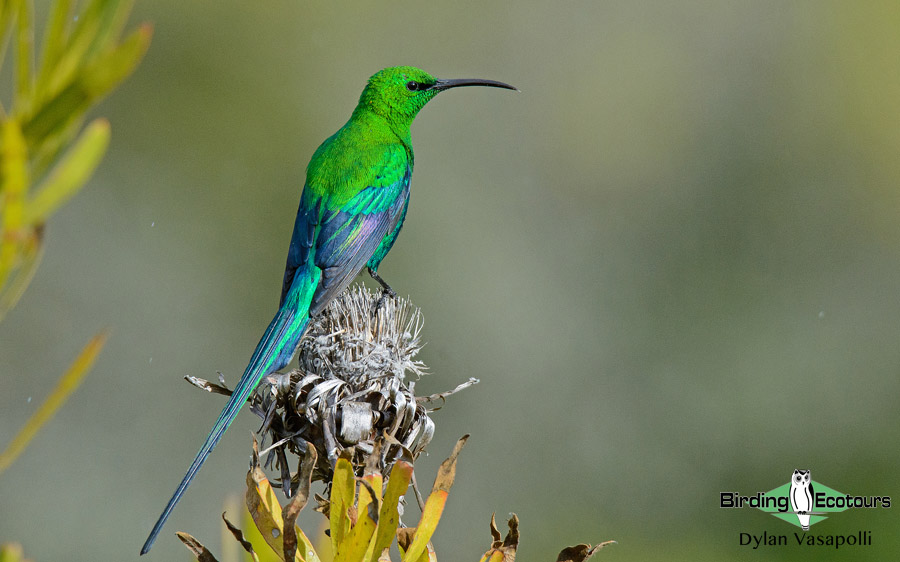
We encountered a couple families of the bizarre, but insanely awesome Ground Woodpecker, which had now bred and were busy raising young. One of the families that we found to the southeast of Kamieskroon had many young birds. Adult birds have developed the pale eye, while juvenile birds have a dark eye. The photograph below shows two adult birds (right) and a juvenile bird to the left. You can see the darker eye as well as a pronounced gape.
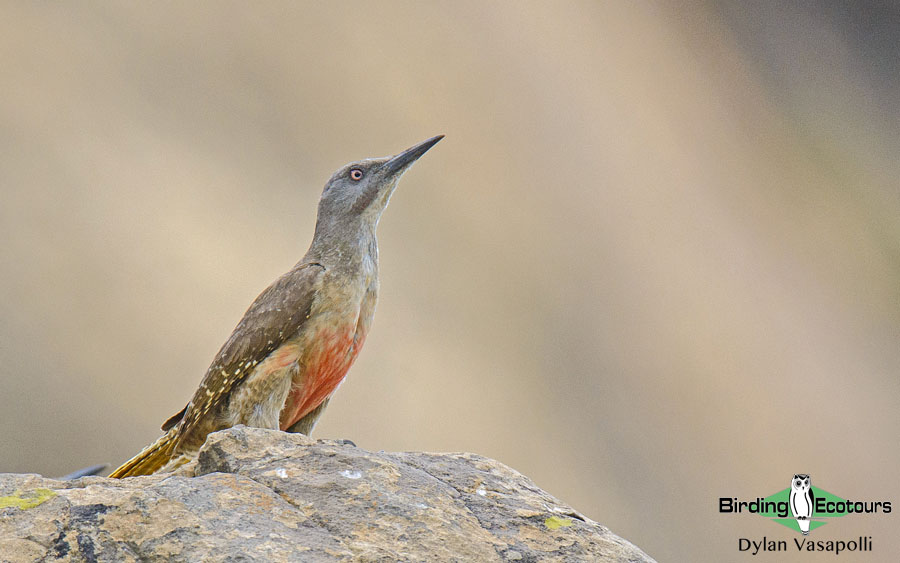
Namaqualand hadn’t received as much rain as it had in previous years, and therefore the flower season was definitely a bit late and flower densities were very low. We spent one morning driving to the west of Kamieskroon towards Namaqua National Park; here we added species to our general trip list as well as to our list of larks. Karoo Lark, Cape Clapper Lark, Large-billed Lark, and Spike-heeled Lark were all around and in good numbers.
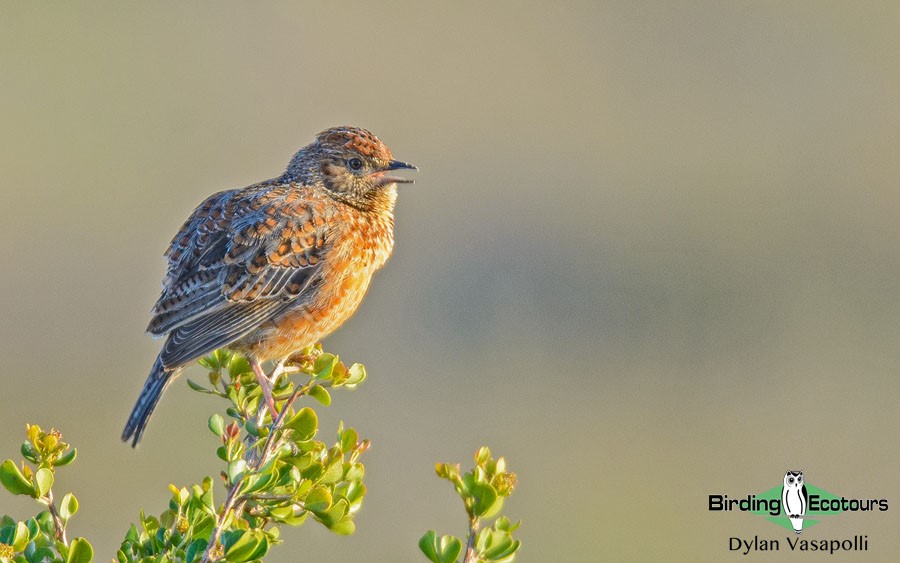
The last species of lark that we added to our list for the trip was not a true lark but actually a sparrow-lark, the scarce nomad Black-eared Sparrow-Lark – a very interesting species that was certainly my bird of the trip and one that put on a fantastic show. This sociable species ‘erupts’ in response to rain and can be found in really good numbers in some areas after decent rainfall. They are really conspicuous in flight, and we actually identified a few males displaying at 100 km/h plus. In display these males fly silently in circles and figure eights at about 10 – 20 meters off the ground. They will then land, spend some time on the ground, and then take off and start the display again. What a bird!
Try as we might, we could not locate the likes of Stark’s or Sclater’s Larks. Sclater’s is often seen as the most difficult and sought-after lark species in the Northern Cape, while Stark’s seem to have stayed north this year, perhaps in response to the drought and El Niño effects that Southern Africa has been experiencing this year. Our trip total was in excess of 200 species over seven days, and our lark tally ended with 14 species.
The large area of the Northern Cape can certainly seem quite intimidating to some, but it certainly must not be underestimated or neglected. Driving the long distances slowly and taking your time at each spot are key to making sure that you don’t miss the wonders of this province’s beauty and diversity.
We do run custom-made ‘Larks and regional endemics of the Northern Cape birding tour‘ where we aim to tick off as many of the Northern Cape larks and other specials as possible.
